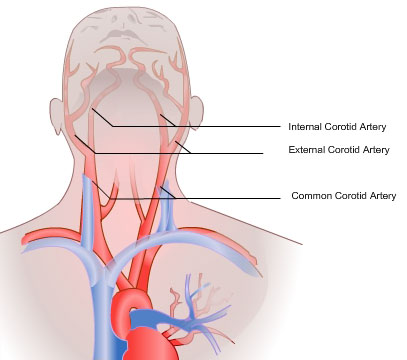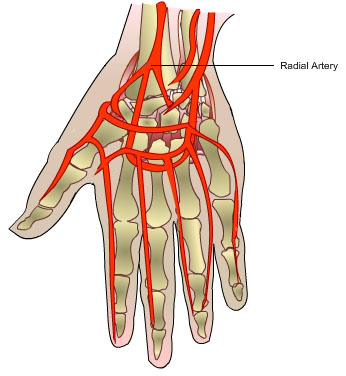The carotid artery is a major artery of the head and neck. There are two carotid arteries, one on the left and one on the right. From their origins and for about half their length, the carotid arteries are known as common carotid arteries . The left carotid arises from the arch of the aorta, while the right carotid arises as one of the branches of the bifurcation of the brachiocephalic artery (trunk) into the carotid and right subclavian artery. The carotids then continue along similar paths within their respective sides of the neck and skull. At approximately the level of the third cervical vertebra, the common carotid branches into the internal and external carotid arteries.

The femoral artery is a large artery of the thigh. It is a continuation of the external iliac artery which comes from the abdominal aorta. The external iliac artery becomes known as the femoral artery after it passes the inguinal ligament. For a while at this location, (the femoral triangle), it can be known as the common femoral, because it has not yet branched. It usually gives off a branch known as the profunda femoris or the deep artery of the thigh , while continuing down the thigh medial to the femur. (The profunda femoris is even closer to the femur, and is more posterior).
The femoral artery goes through the adductor hiatus (a hole in the tendon of adductor magnus), into the posterior of the knee. Passing between the condyles of the femur, it becomes the popliteal artery of the popliteal fossa.The radial artery is the main blood vessel, with oxygenated blood, of the lateral aspect of the forearm. It arises from the brachial artery and terminates in the deep palmar arch, which joins with the deep branch of the ulnar artery. It is palpable on the anterior aspect of the arm over the carpal bones (where it is commonly used to assess the heart rate and cardiac rhythm).
